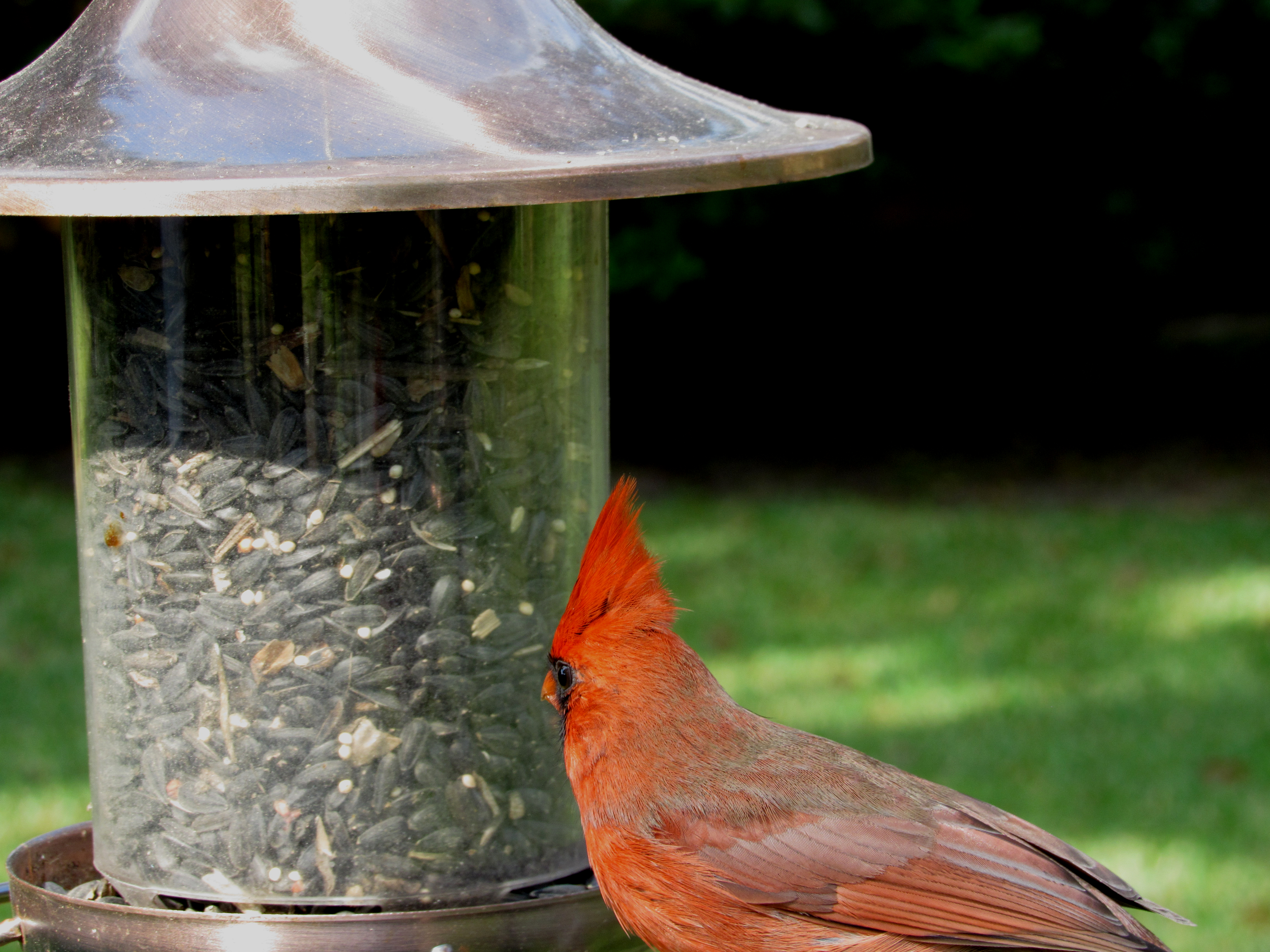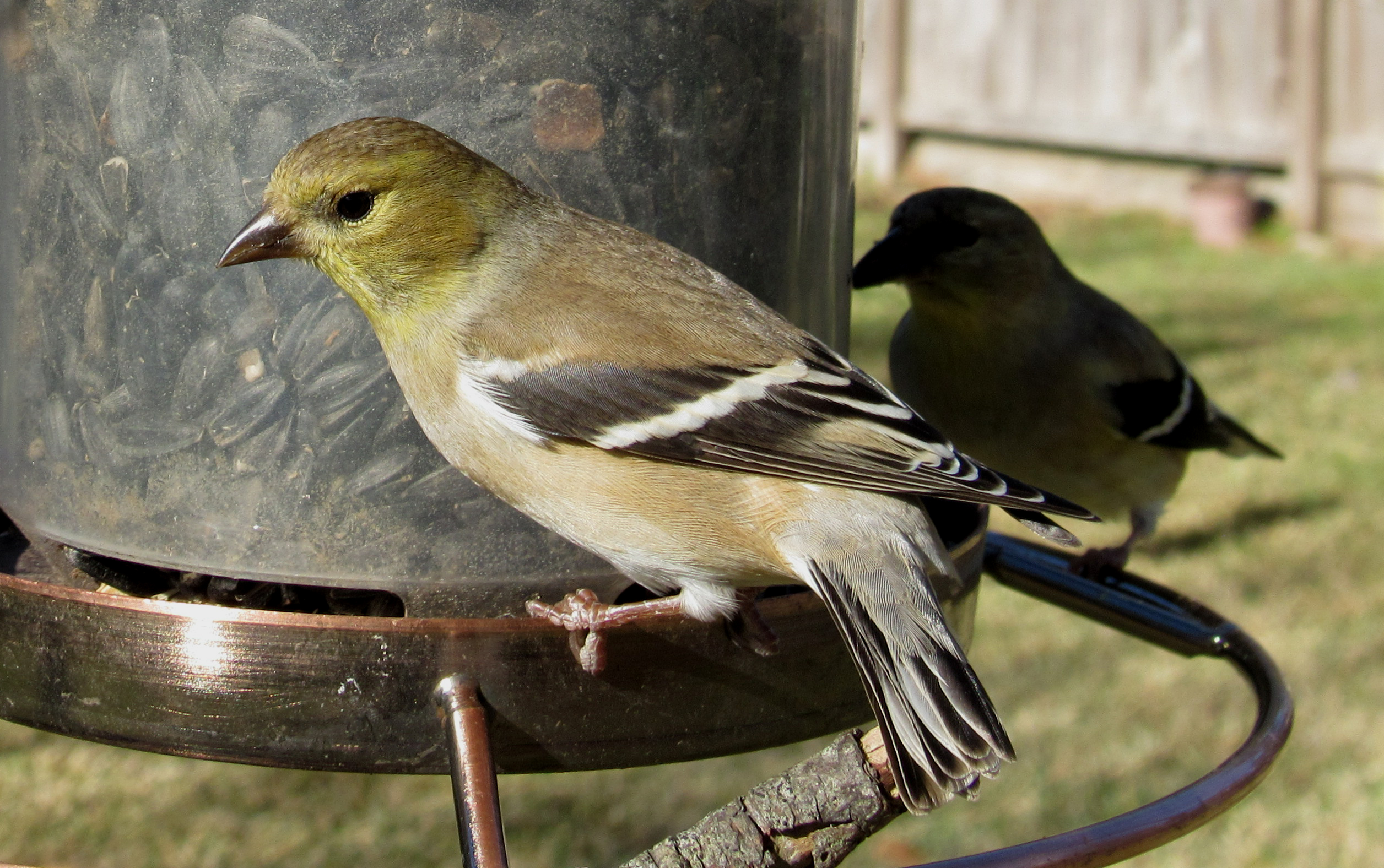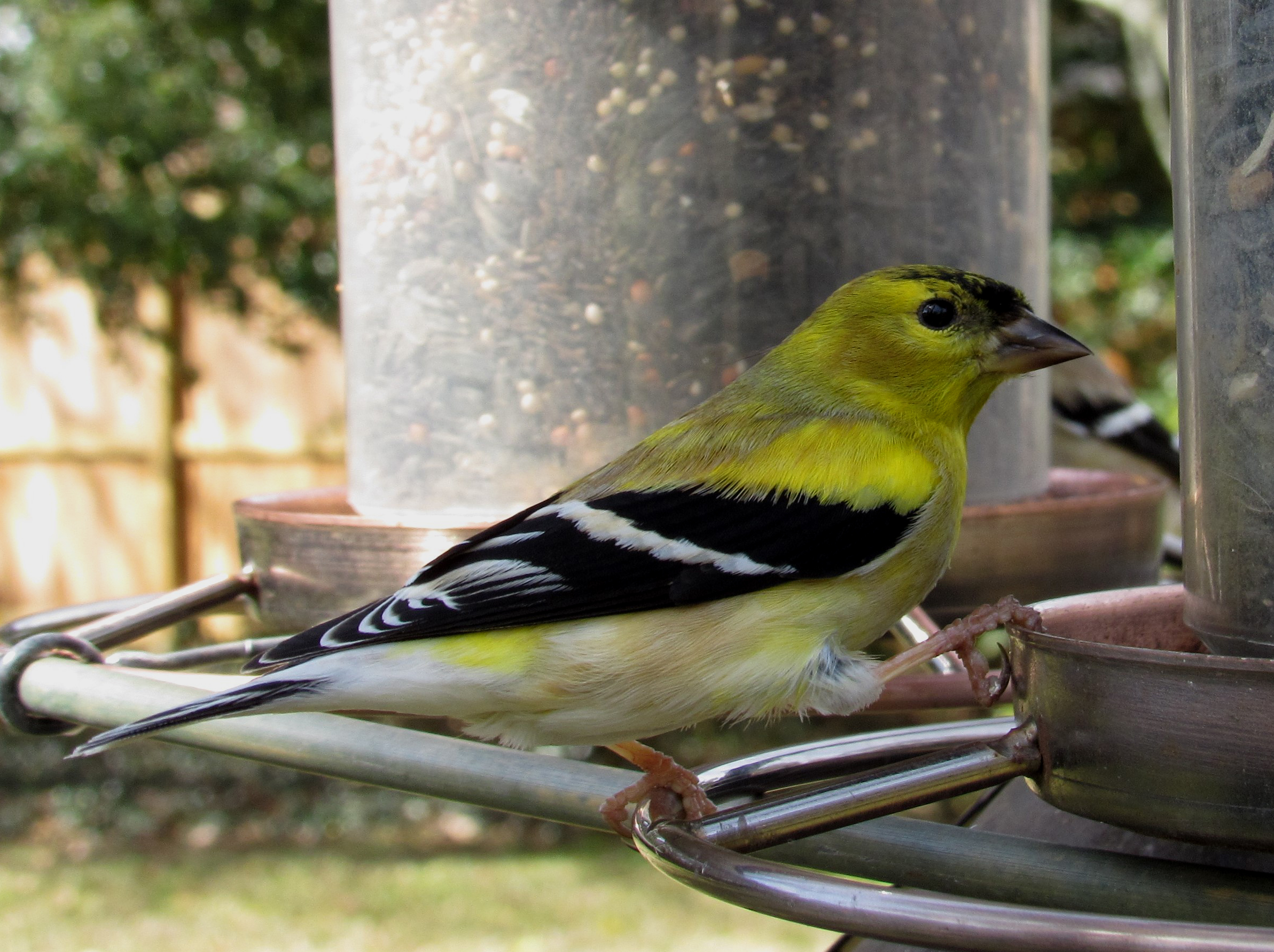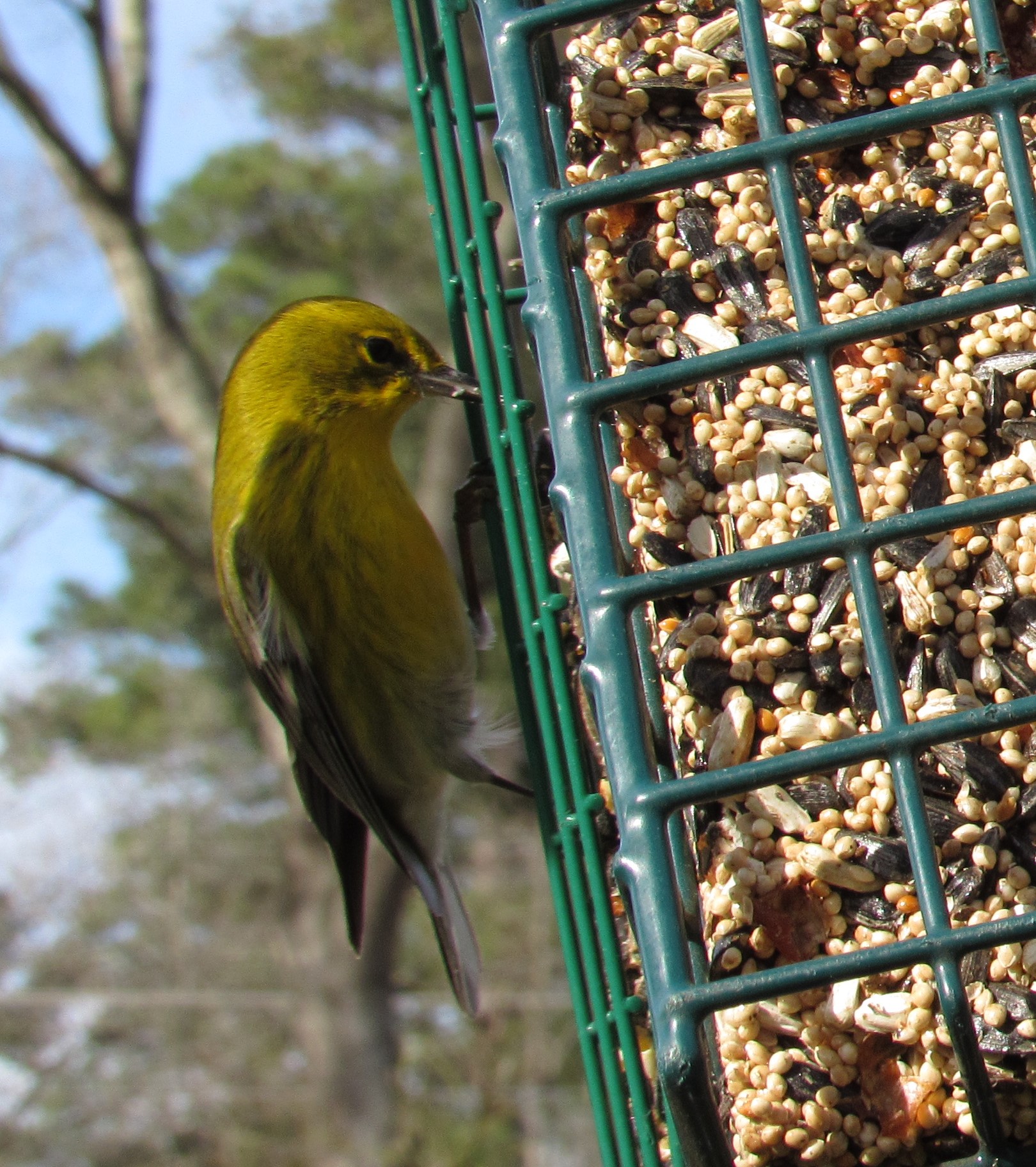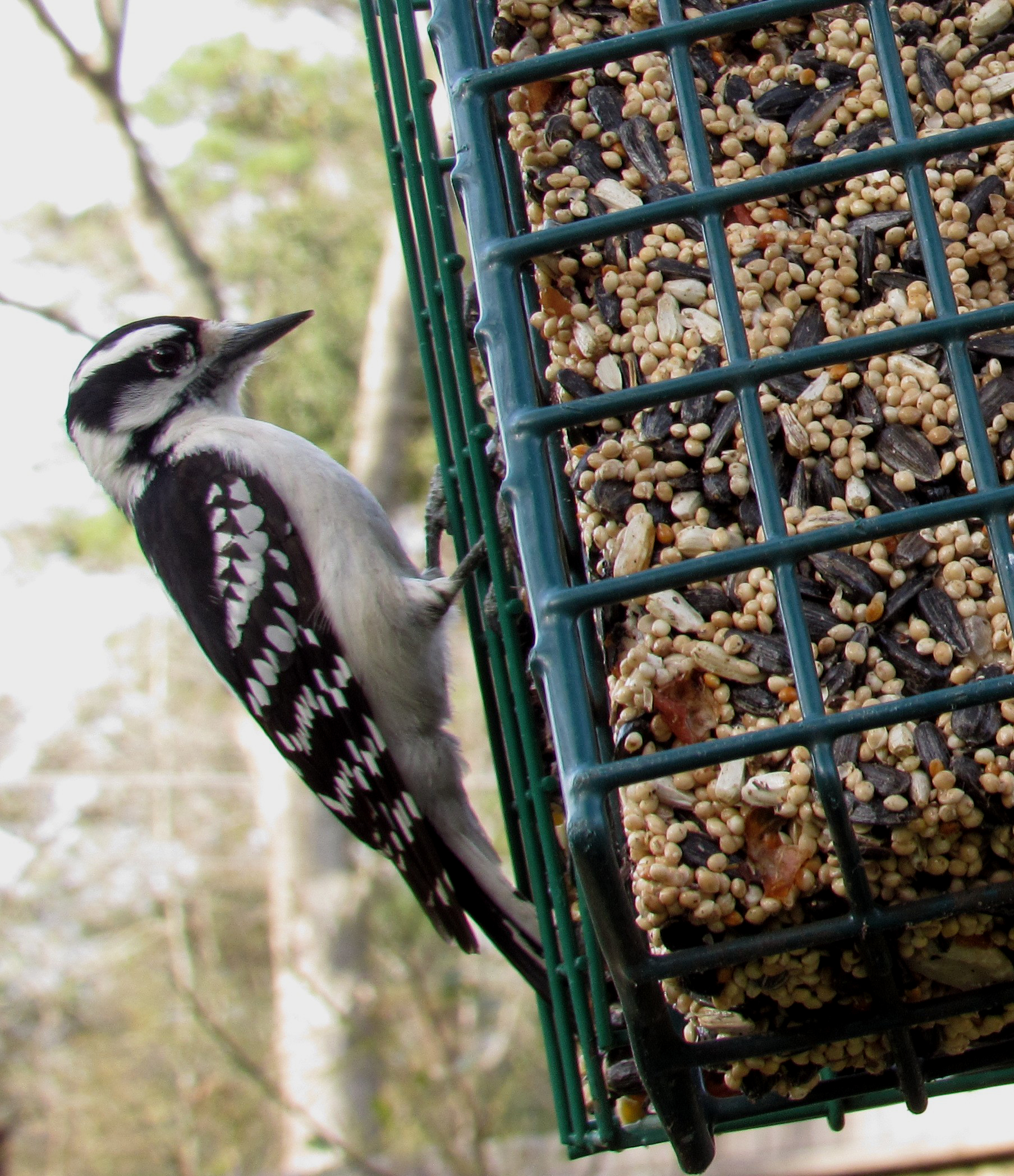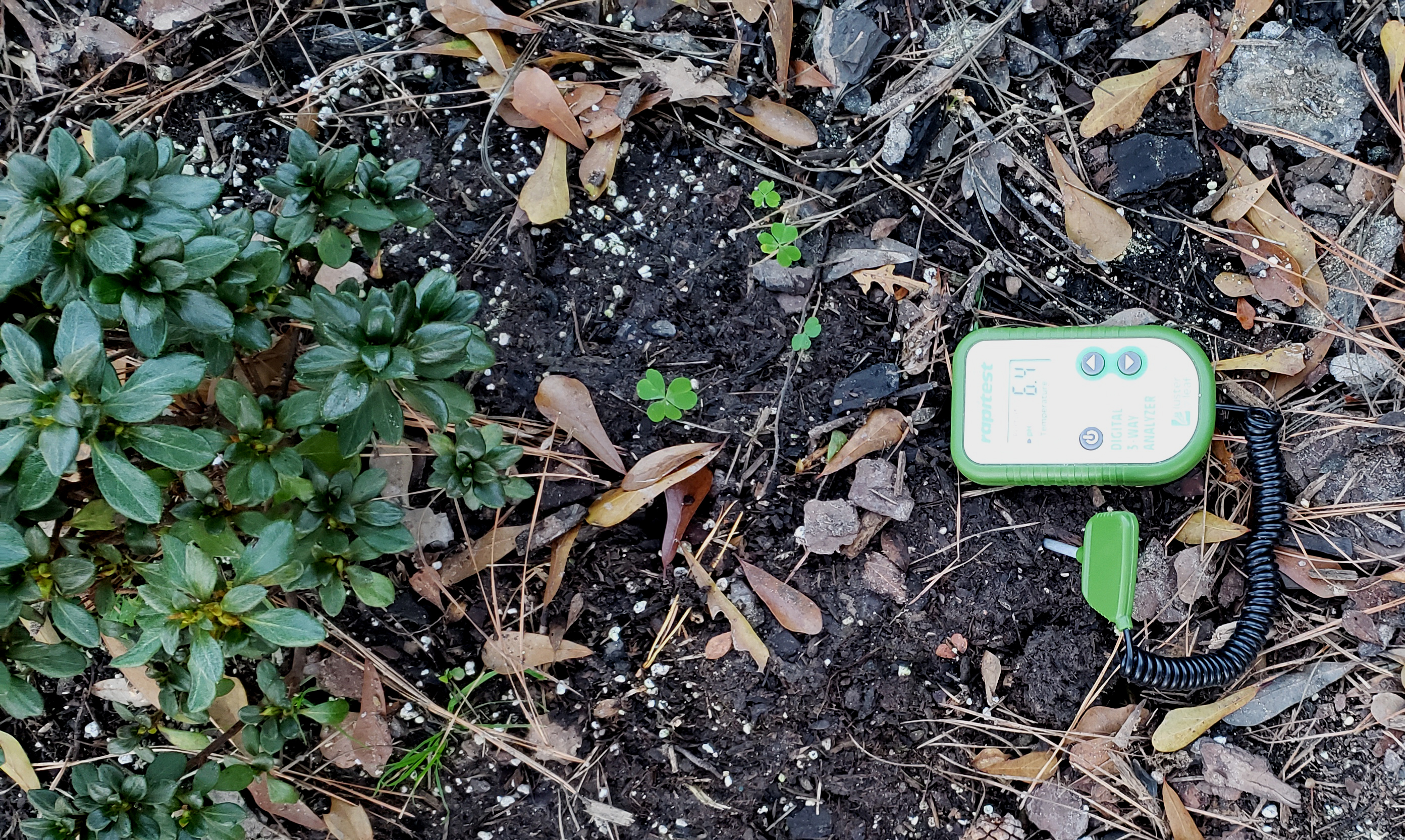- Details
- Written by Administrator
- Category: Uncategorised
- Hits: 2386
These photos were taken with a Canon PowerShot SX530 mounted on a tripod placed near the feeders. The camera has an app that allows you to see the image from the camera and take photos remotely with your phone. I wanted to get pictures of birds that visited my backyard feeders, not just bird pictures. I took a lot of photos (that's the problem with digital cameras) and these are my favorites.
Cardinal
Bluejay
Goldfinch in winter colors
Another brighter colored Goldfinch
Another Goldfinch that posed for several pictures
Pine Siskin - I think
A few failed attempts of trying to get a good picture of a Pine Warbler - the Pine Warbler has a yellow breast with streaking and two white bands on brownish wings vs one white band on the Goldfinch
Same Pine Warbler, a little off center, and refusing to stay still . . .
Red Bellied Woodpecker - here is a link to a photo (not mine) of a "Northern Flicker" note the brown and black wings and black spots on chest on the Flicker - https://www.marinij.com/wp-content/uploads/2019/12/MIJ-L-BIRDS-0106-02.jpg?w=1569
Downy Woodpecker
A female Ruby-throated Hummingbird
- Details
- Written by Administrator
- Category: Uncategorised
- Hits: 1634
The ideal pH range for Azaleas is from 5.5 to 6.5. PH is defined as the negative log of the number of moles of hydrogen ions (H+) per liter of water. There are 10 times as many hydrogen ions in a 5.5 solution compared to 6.5 and a 100 times between 4.5 and 6.5. Oh, okay . . . knowing that doesn't help a lot but something to keep in mind when looking at those numbers on a pH meter.
I've had a hard time getting the pH to go down and I thought the problem was with those cheap two prong meters. So I got a digital meter; which gave me about the same readings (though it is easier to read) but they work on the same basic science so probably not any more accurate. To lower pH I've added elemental sulfur and ferrous sulfate. The sulfur takes a couple of months or more to undergo a biological reaction to form sulfuric acid. The other method of adding ferrous (iron) sulfate, an acidic salt, is a quick chemical reaction. I'm a little concerned that I'm adding too much sulfur and that the pH could eventually drop too low and kill everything. My municipal water supply is a little alkaline, from calcium carbonates I think, so watering raises the pH. So I have used various methods to treat the water before watering. Hydrochloric acid, also called muriatic acid, certainly works but the very strong fumes and high concentration makes it difficult to work with. I have to add very small amounts of acid at a time and still sometimes go too far acidic, add water and go too far the other way; the only practical way to use muriatic acid is to have a very large container of water.
I'm also trying my hand with blueberries which prefer an even more acidic range of 4.5 to 5.5. I'm growing the blueberries in containers so it's a little easier to control the ph. I collect rain water in 5 gallon buckets for the blueberries and when I run out of rain water I'll add about a cup of vinegar to a 5 gallon bucket of regular water. I have several pH meters for liquids and I calibrate them occasionally. The vinegar, or acetic acid, is a dilute concentration of a weak acid and therefore is much easier to adjust the pH of 5 gallons or even less.
Having said all that about water, once the azaleas get established they are pretty drought resistant and don't really need much attention; the blueberries however need to be watered regularly when putting on fruit.
Any water I have stored I use a product called Mosquito Bits which claims to be fish, bird, pet, plant and almost everything else friendly. But it does kill the mosquito larvae.
